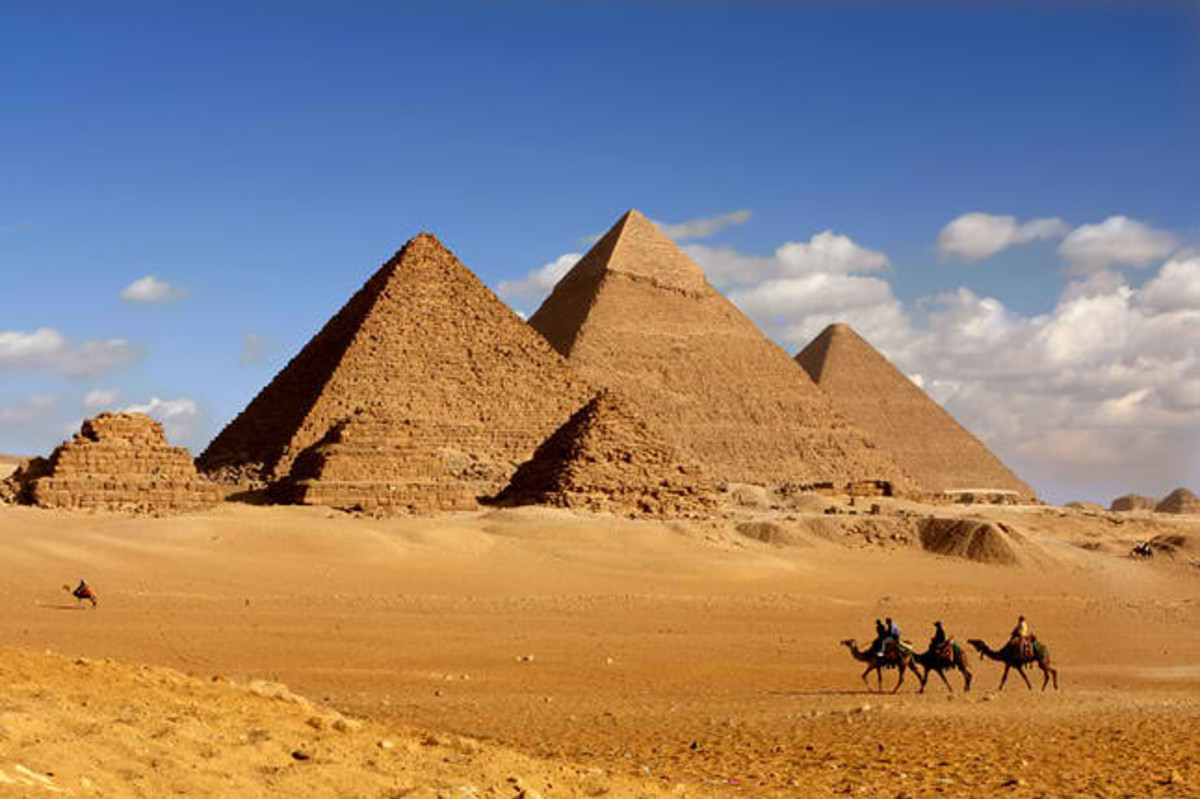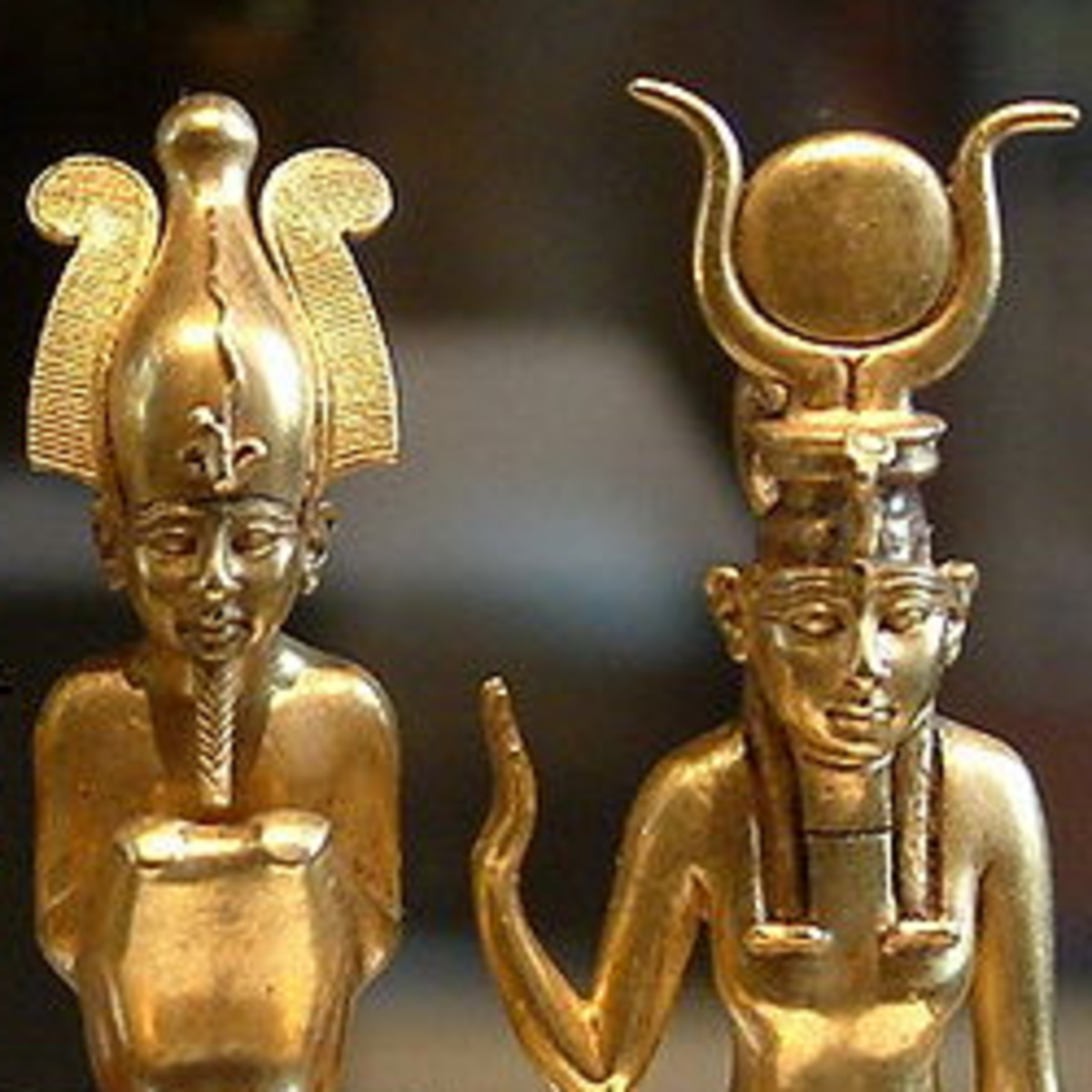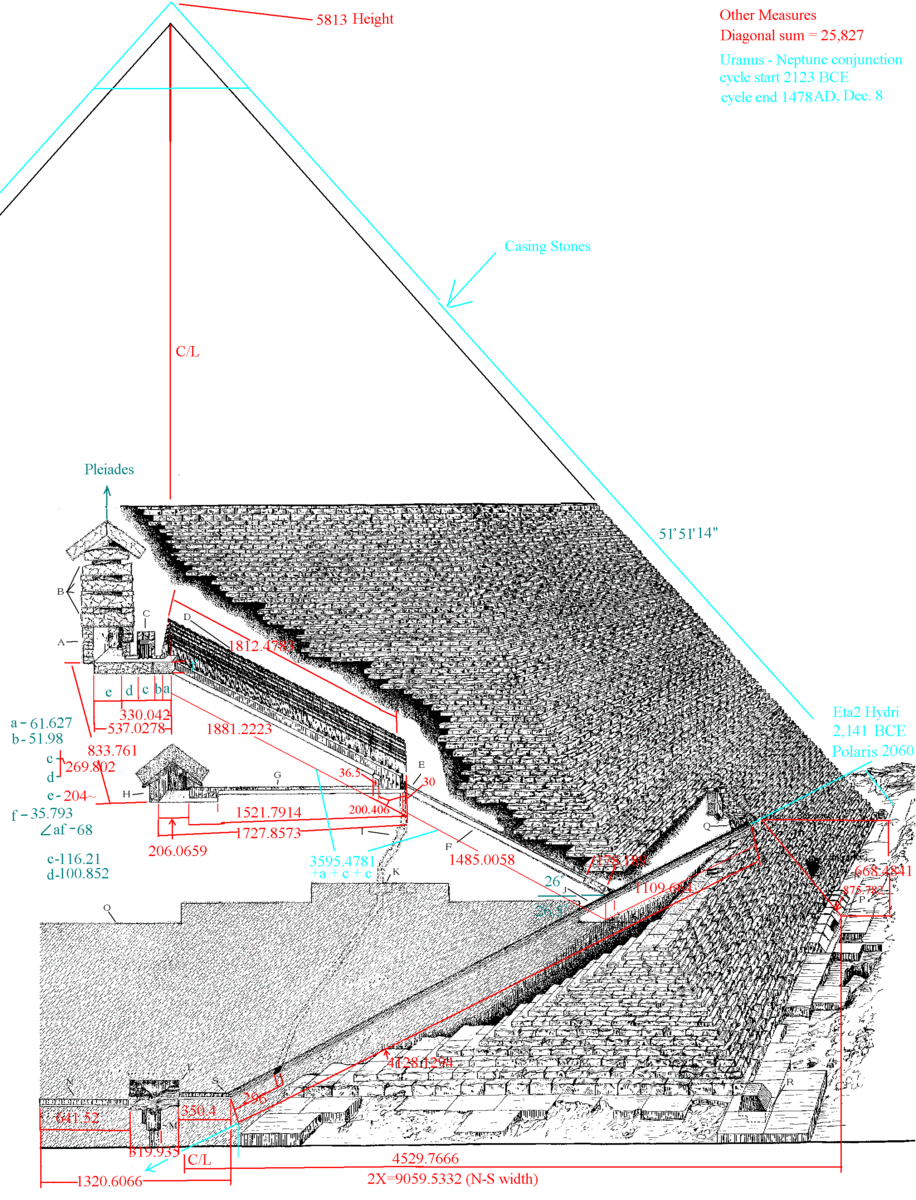- HubPages»
- Education and Science»
- History & Archaeology»
- History of the Middle East
Pyramids of Giza Facts: The Great Pyramid of Ancient Egypt
Who Built the Pyramids?
The pyramids of Giza inspire wonder -- and have attracted visitors from all over the world from ancient times to the present day. Speculations about who built the pyramids, how they were constructed and the meaning of their geometry and symbolism range from the practical to the outrageous.
The pyramids of Giza facts make it clear that the pyramids were built by human beings -- not aliens. As colorful as legends of extraterrestrials landing in Egypt and creating the pyramids may be, all the evidence shows that artisans and laborers built the pyramids.
Archeological excavation of a settlement that housed workers near the pyramids has offered glimpses into the workers' lives, and suggests a better standard of living than previously supposed. The discovery of a cemetery for workers at Giza in 1990 provided clues to the worker's lives. One area of the cemetery contains slightly better tombs for artisans and the other area has simpler tombs for laborers. These burials also suggest that the workers were valued and honored -- contrary to many stereotypes of pyramid-building.
Fourth dynasty pharaohs had the pyramids built for their tombs. The Great Pyramid is Khufu's, the one with the cap on top is Khafre's and the smallest pyramid is Menkaure's (c.2532 - c.2503 BC). The pyramids at Giza are part of a mortuary complex that included tombs for queens, princesses and nobles, and temples. This group of tombs and temples is also called a necropolis, a city of the dead.
Pyramids often included design features intended to foil tomb robbers, such as sealed doors, false tunnels and extra chambers. Curses and booby traps added to the hazards of the tomb robbers impressions. Illnesses once attributed to curses may have been caused by bat guano.
The Sphinx Keeps as Many Secrets as the Pyramids
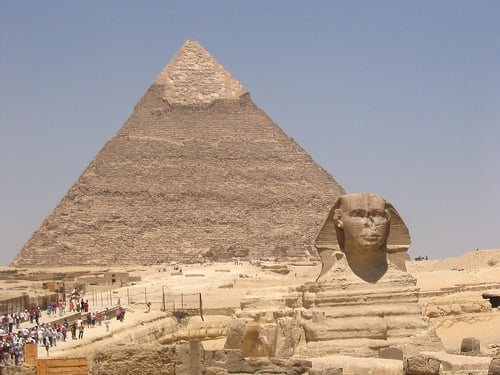
Giza Pyramids: Age and Materials
The pyramids at Giza date to the fourth dynasty of the ancient Egyptians. King Khufu, the pharaoh who had the Great Pyramid built, lived from about 2589 to 2566 BC. Each of the pyramids has a mortuary temple. The mortuary temle for the Great Pyramid had relief-carved limestone walls, and workers used basalt to pave the causeway.
When the great Pyramid was new, it stood 460 tall and was 460 feet along each side. Because the limestone facing of the original pyramid was taken away in antiquity and during subsequent eras, it's now smaller in height and around the outside.
Estimates of the amount of stone and the weight of the blocks vary. Many of the blocks weigh 2.3 tons, some weigh even more, and the Great pyramid contains approximately 2,300,000 blocks, according to "Ancient Egypt." The roof of the King's Chamber within Khufu's Great Pyramid is made up of nine 400-ton granite slabs.
Speculation continues as to how the ancient Egyptians built the pyramids -- hoisting these enormous stone blocks into place -- with the tools and techniques available at that time. Researchers who experimented with carving a nose for the sphinx discovered the limitations and labor-intensive process of using rock and copper tools to shape the stone used for the sphinx. The process involved nearly continuous re-sharpening of the copper tools, requiring workers and a forge running tools back and forth to the work site.
These modern men finally resorted to using power tools. The did succeed in proving that the Egyptians were built of stronger stuff. The social order and religious beliefs of the Egyptians made constructing a tomb for the pharaoh a necessity -- something that the immensely talented sculptors of the time committed themselves to. They didn't take shortcuts in their work because there weren't any shortcuts.
King Khufu
King Khufu, the pharaoh who had the Great Pyramid constructed for his tomb, comes down to us with only one miniature image. A 3-inch tall sculpture shows the seated pharoah wearing a short kilt and a compact, flat-topped headdress, that looks like a hat with rounded sides. He holds the flail that symbolized his office over his right shoulder. The Cairo museum has the limestone statuette on display. It was discovered by the archeologist Flinders Petrie.
The statuette is detailed, showing the kilt's pleats, the ruler's knees, his large ears, wide mouth, tranquil eyes, small chin, flat forehead and broad nose. The king sits on a raised throne with a low backrest.
Fashion note: The ancient Egyptian kilt, worn short in the early Egyptian dynasties, remained a common garment for Egyptian men for centuries, although the fashion changed to progressively longer kilts over time.
Inside a Giza Pyramid -- Khafre's
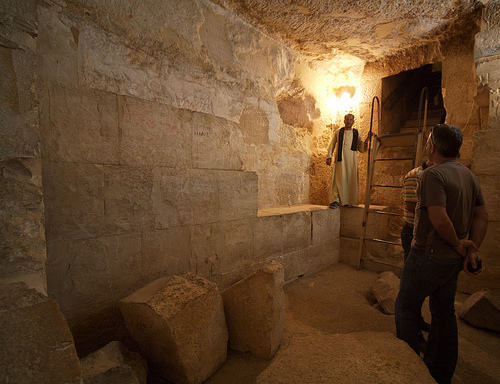
Inside Khufu's Pyramid
The Great pyramid contains branching passages and chambers. The pyramid chambers include an unfinished underground chamber, the King's Chamber, and a mis-named Queen's Chamber. The queens and princesses at Giza have separate pyramids from the Pharaohs.
Passageways extend up and down and one winds around the heart of the pyramid. The structure of the pyramid's interior testifies to the skill of its craftsmen. The King's chamber, with Khufu's sarcophagus, has an antechamber that was blocked with a trio of granite slabs to protect the pharaoh from grave robbers. Then as now, there were thieves who prey on the dead, stripping bodies and burials of valuables.
The King's chamber is lined with granite, and Khufu's plain sarcophagus was made of granite. A sarcophagus is usually shaped like a human body. It serves as the coffin for the deceased. The word sarcophagus comes from words that translate as "flesh" and "to eat."
Small shafts through the pyramid that extend directly from the King's Chamber to the pyramid's exterior were included to give the pharaoh's spirit clear routes to heaven, according to the German Archeological Institute.
Great Pyramid from Space, Showing Equal Triangles
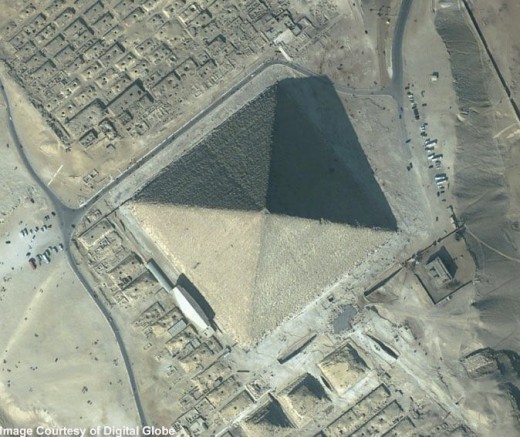
Pyramids of Egypt Resources
"Ancient Egypt: An Ilustrated Reference to the Myths, Religions, Pyramids and Temples of the Land of the Pharaohs"; Lorna Oakes & Lucia Gahlin; 2002
A well-researched, detailed exploration of many key aspects of ancient Egyptian beliefs and the architecture and features of tombs and places of worship.
The Global Education Project: The Dimensions and Mathematics of the Great Pyramid
Detailed measurments, angles and mathematical formulae for the Great Pyramid, with diagrams. The site also features the other two king's pyramids of Giza.
Includes a transcript of the 2010 broadcast of this PBS special, with details about the research into the building of the sphinx. They estimated that it would have taken 100 carvers three years to build the sphinx.
Author's Note: Pyramids of Giza Facts: The Great Pyramid of Ancient Egypt
This is a work in progress. Check back for more Giza pyramid information and links.
The pyramids remain among the most awe-inspiring works of ancient architecture to survive into contemporary times. They stand near the teeming city of Cairo where you can visit the Cairo Museum to see ancient Egyptian artifacts.
In the quiet of an ancient tomb, you can feel the same massive structure as the ancient workers and pharaohs.
If you enjoyed this article, please share it. If there's enough interest, I'll continue the series.
I've been captivated by the ancient Egyptians since I was a kid. I minored in Classical Archeology at San Francisco State University, where I had the opportunity to work with the Sutro Egyptian Collection in the museum there.
Thanks for reading.
Copyright Travis Arts 2013, all rights reserved. Updated September 2012.


